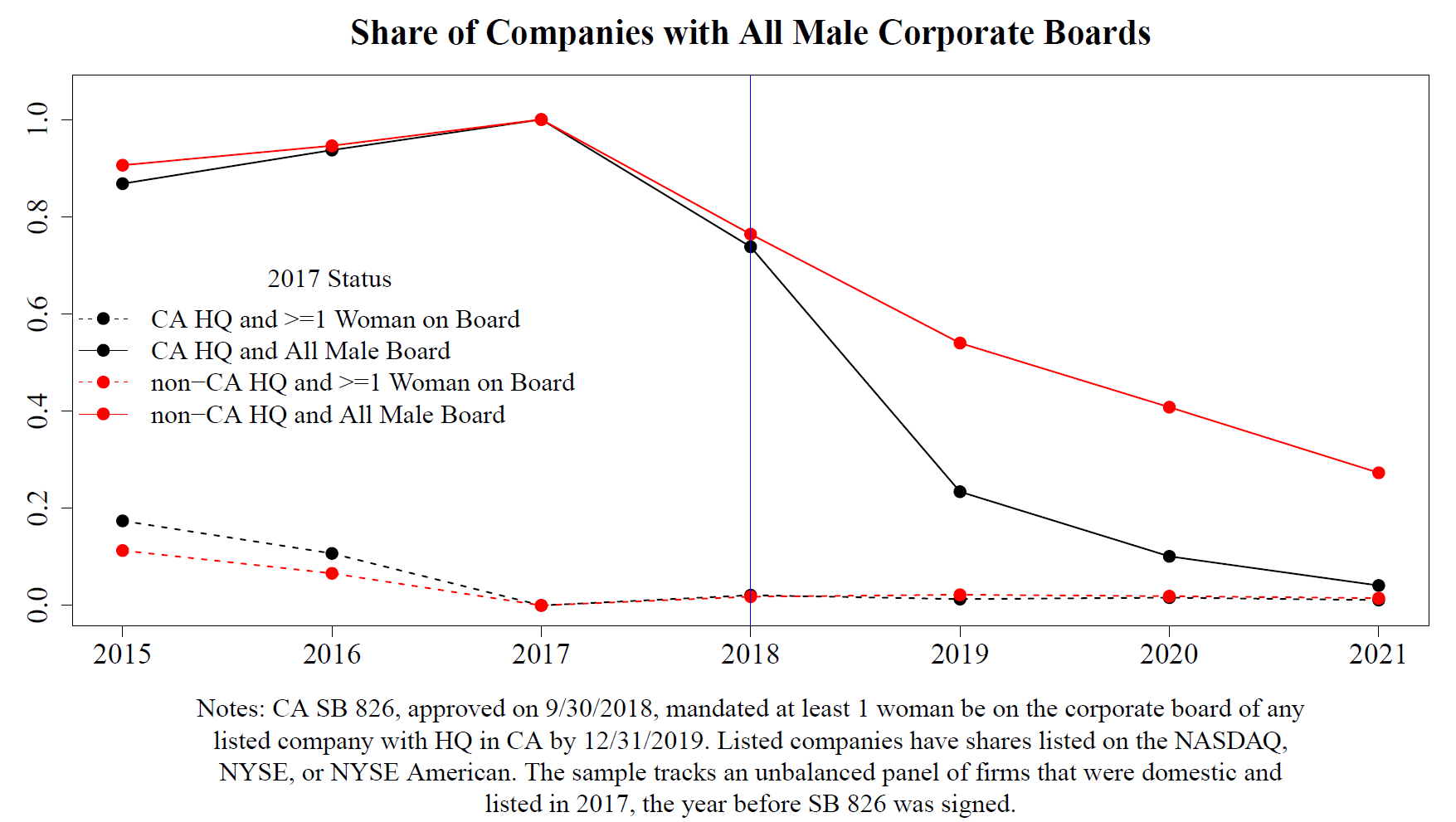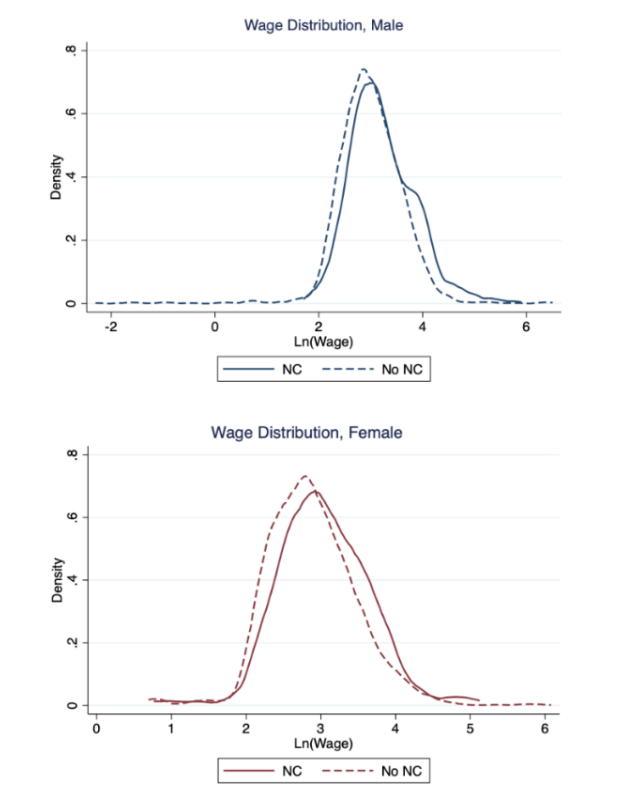Research
-
How Do Firms Respond to Gender Quotas? Evidence From California's SB826
-

-
Abstract
This study examines the impact of California’s SB826, enacted in 2018 and requiring at least one female director on corporate boards by 2019, on financial performance and governance. The quota reduced the share of all-male boards by 24 percentage points without harming financial performance from 2018 to 2021. Governance measures remained stable. I find that SB826 reduced firms’ reliance on existing networks, suggesting that search friction may have previously prevented some qualified women from joining boards. Women appointed after the quota, especially among larger firms and those in male-dominated industries, appear to have less influence.
-
Presentations
Interdisciplinary Seminar Series at Columbia University (2022), Discrimination and Diversity Workshop at University of East Anglia (2022), 17th Annual Economics Graduate Student Conference at Washington University in St. Louis (2022), Society of Labor Economists (2024), Canadian Economics Association (2024, 2025)
- Link to full study
-
Media
-
Do Non-Compete Agreements Help or Hurt Workers? Evidence from the NLSY97 (with Xiangru Li and Luke Rawling)
-

-
Abstract
While non-compete agreements (NCs) are prevalent, the incentives driving their use and their causal effects on workers remain poorly understood. We develop a model with asymmetric information to show that NCs shift the nature of allocative inefficiency by reducing inefficient quits and increasing inefficient retention, while mitigating the canonical hold-up problem. The model predicts that NCs are more likely to be used in industries with high returns on industry-specific investments, and that signers have longer job tenures, higher contracted wages, and receive more firm-provided investment than similar workers without such agreements. To test these predictions, we use panel data from the NLSY97 and a difference-in-differences research design to estimate the causal impact of signing an NC. We find that NCs raise job tenures by 6% and lead to an immediate wage increase of 10%. Six years after signing, the wage premium falls to 5%. There is also substantial heterogeneity across worker demographics, with non-white, non-college and lower-wage workers experiencing lower wage-growth after signing an NC. Consistent with the theory, NC usage is more prevalent in industries with high returns on experience and among workers who perform sophisticated tasks. While the theory links NCs to firm investment, we find no evidence of increased investment in formal training, suggesting investments prompted by the agreement are likely informal. Our findings caution against blanket bans on non-compete usage.
-
Presentations
Queen's University Faculty-PhD Working Group (2024), Organizations and Markets Workshop at Smith School of Business (2024), European Association of Labor Economists (2024), Southern Economics Association (2024), Administrative Sciences Association of Canada (2025), Canadian Public Economics Group (2025) by co-author, American Economics Association Non-Compete Agreements in Low-Wage Markets Session (Scheduled Jan 2026), Canadian Labour Economics Forum (Scheduled Jan 2026)
- Link to Full Study
-
Media
Non-technical summary, Video Interview, Toronto Star, Americans for Tax Reform, CBC
Selected Works in Progress
- The Effects of Non-Compete Regulation
- Mandatory Disclosure and Female Representation in Corporate Leadership: Evidence from NASDAQ (with Dhruv Baswal, Tanvir Ahmed Khan, Bailey Kraus)
- Mandatory Disclosure Slides